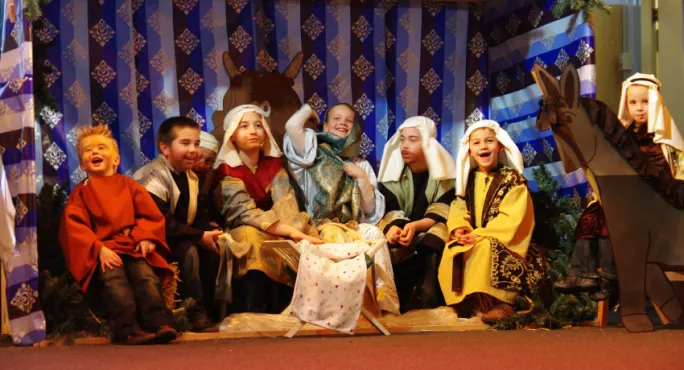I am a firm believer in routines, structure and high-quality teaching at all times. But I love Christmas in primary schools.
Carol concerts, Christingle services and the nativity production are things I look forward to in that final week when we’re dead on our feet and in need of two weeks off.
There is a certain magic and wonder in the primary school nativity performance. It is a magic that I refuse to lose, regardless of the current pandemic. That’s why our nativity performance is definitely going ahead this year.
How to run a nativity in a pandemic
Current guidance for primary schools (though this may change by the time this comes out!) states that we should be grouping our children into bubbles to reduce contact between groups. There is a recommendation that we socially distance where possible, but it is understood that this is not always possible with younger children.
When it comes to singing, the guidance states that singing should not take place in large groups unless significant space and natural airflow can be maintained. Singing should take place outside or with the children sat side-by-side or back-to-back.
So when it comes to a nativity performance, the guidance does limit us for what we can do, but it does not make it impossible.
So, determined to go ahead with the nativity and achieve a certain level of normality, I set about making a plan for our performance.
I am in a one-form entry primary school where only EYFS and key stage 1 children perform in the nativity. We are working in class bubbles, so I have three bubbles to coordinate. This could easily be scaled up for larger schools.
1. Make the decision to record it
There is no safe way to bring bubbles together for a nativity performance. We will be recording our nativity and sending out a private YouTube link for parents to watch at home and the rest of the school to watch in class.
A letter will go out to ensure each child has permission to be recorded for the nativity performance. Any children who aren’t allowed on camera can either wear a mask (not that kind of mask!) or stand out of shot.
2. Choose your cast carefully
To ensure there is no contact between bubbles, Year 2 will be taking on all acting/speaking roles in the play. This means that we can rehearse in class and don’t need to worry about scheduling rehearsals with other classes.
Year 1 and Reception will be doing the majority of the singing and any group acting, for example, stars and angels. This will mean that the cute factor is still very present but that they do not have to stress about the little ones learning lines. They can perform their songs around the school or outside with backing tracks playing through speakers.
3. Break it down
Teachers in all classes will be given the script with clear instructions on who is singing and saying each part. Then, it is down to the classes to rehearse and record their own sections. Teachers can organise costumes with parents or in-house and these can be kept within the classroom to ensure they don’t come into contact with anyone out of the bubble.
4. Mash it all together
Next is when the magic happens. Class teachers will record their bubble’s scenes or songs and I will cut the videos together and create one nativity movie masterpiece!
While this isn’t the ideal situation and it won’t be as cute as the usual production, it has the potential to be fantastic and could really lift people’s moods, even if just for a moment.
Benefits of such a set-up include no cross-bubble contact, no need to spend hours every week rehearsing altogether, fitting rehearsals and recording in around your own timetable, the ability to re-record mistakes and feed children lines where necessary, and a potentially hilarious bloopers and outtakes video!
Shannen Doherty is a Year 2 teacher in London




